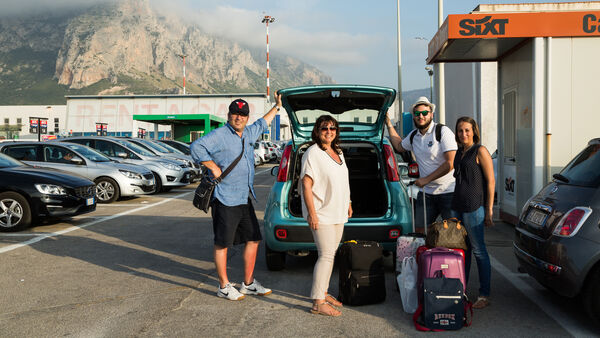Leasing a Car in Europe (and Other Rental Alternatives)
By Rick Steves
For longer car trips, leasing a car can be more affordable than renting; for short jaunts, consider a car-share program. Neither is as widely available as rentals. For a cheap lift, consider ride sharing.
Leasing
Leasing gets around many tax and insurance costs, and is a great deal for three weeks or more. Leases are available for periods of up to five and a half months. Leased cars can most easily be picked up and returned in France, but for an additional fee you can lease in some locations in the Netherlands, Germany, Spain, Portugal, Switzerland, Greece, and Italy.
Prices include all taxes, as well as zero-deductible theft and collision insurance valid all over Europe, including countries in the east. (Note that due to Brexit, you cannot take a leased car from the Continent to the United Kingdom.) You won't pay extra for additional drivers or for venturing too far east, and you get a shiny new car. Auto Europe, for example, leases no-frills Peugeot 208s for as few as 21 days for about $1000. Renault Eurodrive offers similar deals. In general, the longer you lease the car, the lower the price.
Car Sharing
Car sharing makes the most sense for day trips. Car-sharing providers place cars throughout a city, let users rent them for just a few hours or days, and charge no enrollment or annual fees. You book your car online or through an app, pick it up at a set location, and return it to the nearest location when you're done. The fee usually includes insurance, fuel, and GPS. There's no extra fee for drivers ages 21–24, and prices are relatively reasonable — in London a Toyota Corolla costs about $9 per hour or $65 per day. The UK's main car-sharing provider is Hertz 24/7. Zipcar operates primarily in Great Britain and France, plus Iceland and Istanbul. Share Now, which rents Smart cars and Minis along with higher-end BMW and Mercedes cars, operates mostly in Germany and Italy, plus several big cities, including Paris, Amsterdam, and Madrid. Sixt offers car sharing in the Netherlands and Germany. Turo, which operates much like Airbnb but for cars, is also available in the UK.
Ride Sharing
BlaBlaCar, operating throughout Europe, connects passengers with drivers who are making long-distance trips. Riders pay a low service fee in addition to the ride fee, which is calculated based on fuel, tolls, maintenance, insurance, and other car-related costs. The website allows passengers and drivers to rate each other, and for drivers to indicate how chatty they are (from one to three "bla's").


